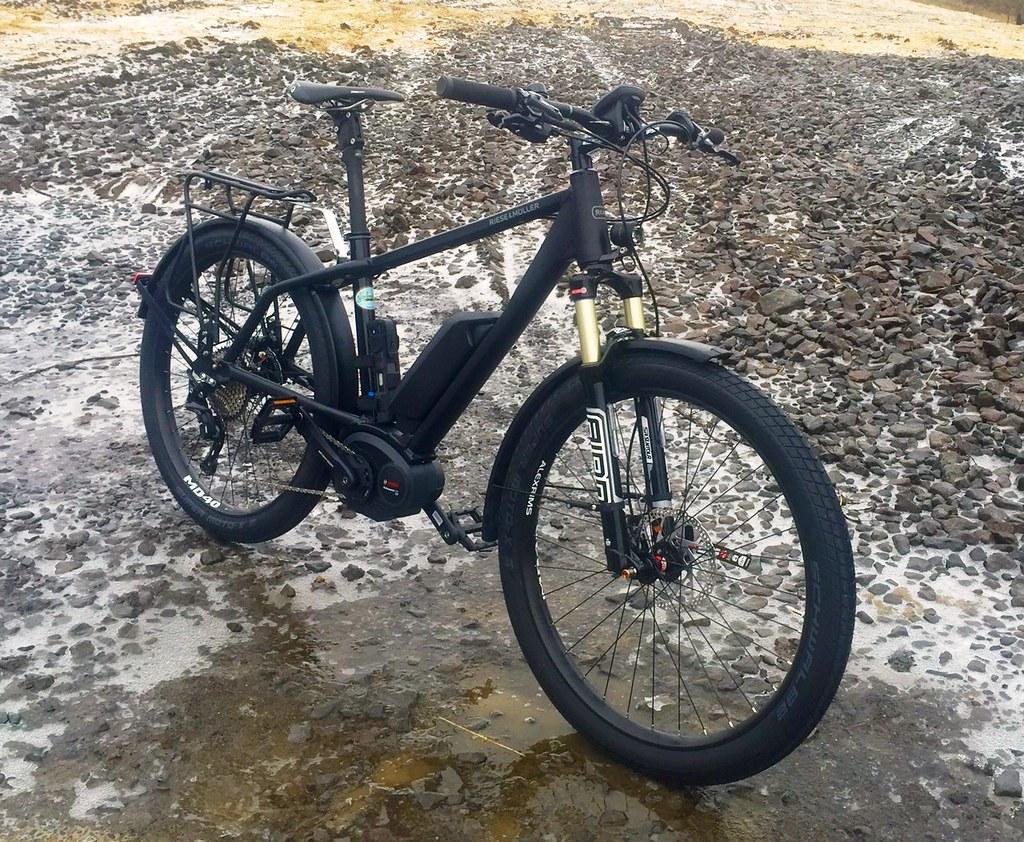Sarah Lightley/The Broadside
Electric bikes, also known as e-bikes, are becoming the next big thing in transportation. You may have seen people riding them around Bend and Redmond, but you have no idea what they are or how they work.
There are two main types of e-bikes: throttle powered and pedal-assist. An e-bike powered by a throttle will be more like a low powered motorcycle. An e-bike with a pedal-assist feels like a smooth traditional bike ride. When you push the pedals on a pedal-assist e-bike, the motor engages and will give you a boost, so you can get up hills and cruise over challenging terrain without getting tired. Both types of e-bikes have a wide variety of styles that fits each consumer’s needs to match their needs.
There are some restrictions on the e-bikes powered by a throttle; the bike cannot go over 20-mph, and the power output can be no more than 1000 watts in the State of Oregon. Also, both types of electric bikes cannot be ridden on a sidewalk. The regulations for e-bikes in the bike lane are the same as traditional bikes.
When speaking to Sterling, a sales associate at Bend Electric Bikes, he indicated that e-bikes were equivalent or more expensive than a traditional bike depending on the style and engineering of the e-bike. When you add in “titanium, with electric, wiring harness, and battery, it will increase the price.” Like any transportation, there is a wide range of prices.
A local, lifelong road and mountain bike enthusiast, Paul Cuddy, recently test rode an e-bike with pedal-assist. Asked how his experience was, he replied “They’re a hoot, they’re fun!” He shared that you can still get a good aerobic workout but have the option to switch the bike into low gear, so you don’t have to exert as much energy in riding up a hill. As for older generations, “it allows them to get to a location that they would never get to anymore.” With pedal-assist boost, your body can go longer before you will need a break. This can help someone who is older or has an injury and needs that extra help.
One question still on my mind, “What if I run out of battery, would I have to push my bike all the way back home or could I ride it like a traditional bike?” Sterling said some bikes would feel like a tank due to the motor resistance, so you would have to push your bike back to your house. However, some companies have been making electric bikes for many years and have developed motors that don’t have noticeable resistance, even when you run out of battery. This way you can ride your e-bike, like a traditional bike, until you get home to charge it.
When asked if he would recommend e-bikes to college students, Paul Cuddy said, “Yes, especially in the city or urban environment. They are a fantastic option for reducing congested traffic and pollution, great for commuting to work, shopping or going to class.”
The electric bike is not here to replace traditional bikes, but provide a more personal, environmental, and health-conscious geopolitical way of transportation, a replacement to cars in cities or urban environments and giving individuals an alternative way to enjoy the great outdoors. As electric bikes grow in popularity, the question comes to mind, in the future, could we see electric bikes replacing cars?














